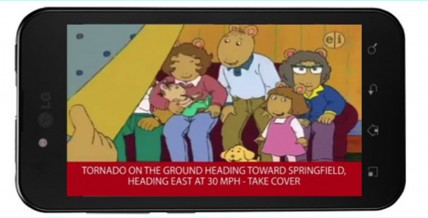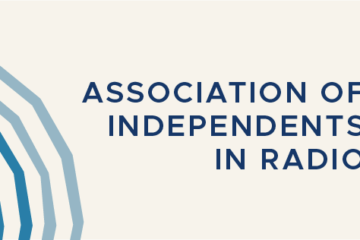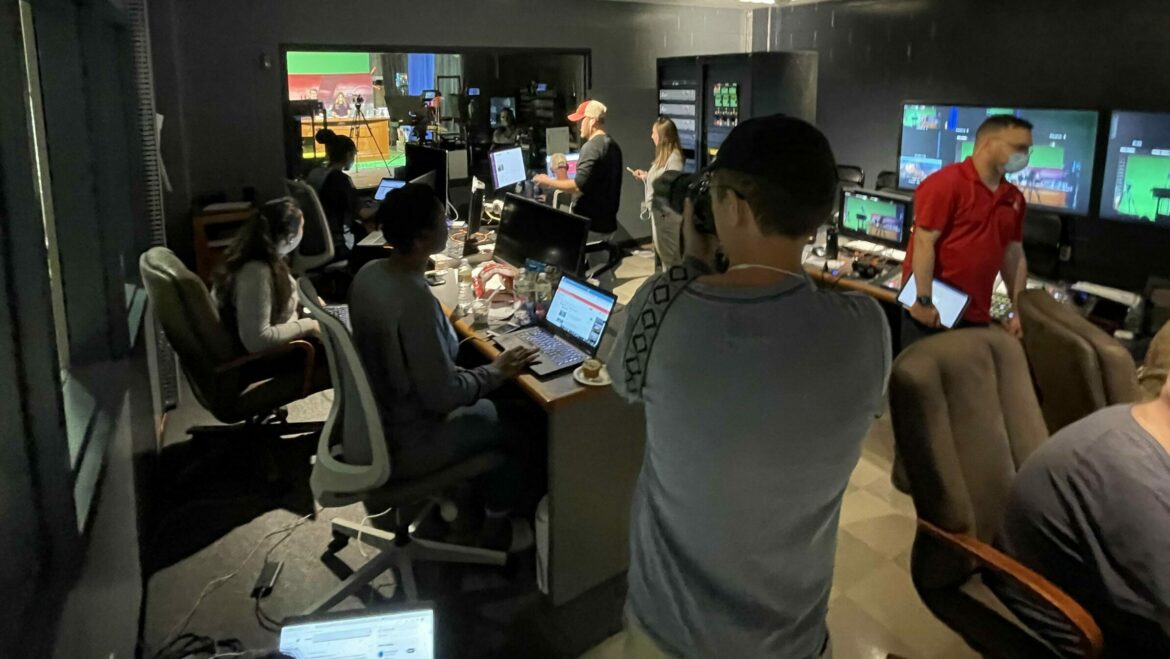In spectrum auction decisions, weigh the value of public service

In a pilot demonstrating the rich-media capabilities of the mobile emergency alert system, mobile users viewing Arthur would have received a warning to take cover from an approaching tornado in Springfield, Mass. (Photo: WGBH)

Under an uneasy truce with broadcasters ahead of the FCC’s 2015 spectrum auctions, government leaders, spectrum dealers and wireless industry promoters are dangling projections of huge cash infusions for public TV stations that opt to sell some or all of their channel capacity.
There’s no doubt that stations in some of the top 10 markets may reap big payoffs if they opt to participate, or that the public TV system could benefit from channel repacking that reduces duplicative signals. But as visions of sugarplums dance in the heads of station executives and their board members, I hope that these stewards of the nation’s noncommercial spectrum also see the bright-red flag that signals “Seller Beware” (caveat venditor in Latin).
With the unique opportunity presented by the auctions, proper due diligence certainly requires PTV leaders to weigh the potential one-time upside from selling. At the same time, a thorough understanding of the “opportunity costs” of forever forsaking their heritage of noncommercial spectrum is at least as necessary. In determining these opportunity costs, I propose that stations create a “public service valuation” for their retained spectrum. It should factor in traditional valuations for their noncommercial operations, models for new revenue and the potential expansion of their public service mission in years ahead.
Outlined below are four factors that enhance public service value on the “hold tight” side of the ledger.
1. Public service game-changer
Retaining spectrum creates another once-in-a-generation opportunity for public TV broadcasters to offer a major new public service for their communities and the nation — mobile emergency communications. Through recent developments in broadcasting technology, combined with the drive by federal, state and local authorities to create the Integrated Public Alert and Warning System, public broadcasters can be the lynchpin of a huge upgrade to the country’s fragile and fragmented public safety communications system.
The Mobile Emergency Alert System, co-developed by PBS and field-tested by public stations, is designed to deliver public safety messages when the grid goes down and cellular networks are jammed. Public stations looking to deploy the service in their communities can buy equipment from commercial vendors right now, and the Federal Emergency Management Agency has offered memoranda of agreement to any station that elects to broadcast M-EAS alerts. Along with video datacasting, M-EAS can be the key to unlocking some of the tens of billions of dollars spent on homeland security communications while improving the health and safety of the mobile America of the 21st century.
Services like M-EAS, which operates alongside traditional programming streams, can also be the key to maintaining and increasing existing federal and state funding for public media. Policymakers and first responders alike are grappling with the reality that cellular fails when you need it most — in times of crisis.
Consider the reaction if “saving thousands of lives through Mobile EAS” was a top talking point during your Capitol Hill Day meetings or in budget presentations to your state legislature or university. M-EAS offers a real-world solution to a real-world life-and-death problem.
Recent natural disasters and emergencies have demonstrated the inherent limitations of the cellular network and its “unicast” architecture. As widely reported, the power outages left by Superstorm Sandy devastated the wireless network while every TV station remained on the air, according to TV Technology. Even without power cuts or physical disruption, the cellular network chronically fails from simple overload, as we saw after the Virginia earthquake of 2011 and the Boston Marathon bombings of 2013.
As a recent FCC filing by the M-EAS Coalition makes clear, only broadcasters can provide warning and recovery messages that include rich-media (such as video, weather radar, plume models, evacuation routes and services for the disabled) to millions of mobile phones and other devices — simultaneously. Broadcasting, with its backup generators, “one to many” architecture and new ability to reach mobile devices, can be the ideal platform for the nation’s next-generation emergency communications system. No other segment of the television industry has more to gain from embracing M-EAS than public TV.
If you don’t see the connection to funding, consider that proposals to harness digital TV technology for another public service mission — to improve education — were a key element of the Association of Public Television Station’s case to Congress to fund stations’ digital transitions more than a decade ago. Many stations “took the pledge” to dedicate a quarter of their new digital spectrum for that purpose. Beginning in 2001, with Republicans controlling the White House and at least one chamber of Congress, lawmakers created new federal budget line items that provided approximately $500 million in increased funding to public broadcasting over the next decade.
Could new emergency services from public media lead to similar new funding streams? Could the federal support lost in the 2011 and 2012 budget deals — imposed through elimination of the Public Telecommunications Facilities Program and CPB’s digital appropriations — be replaced by federal investments in this new emergency communication system? Or could the next PBS interconnection system get funded as “dual use” infrastructure? Billions of dollars are available for homeland security and disaster communications, but the opportunity to tap these funds will exist only for broadcasters who hold on to their channel capacity.
2. Coming soon: Next generation DTV
Digital broadcasting is a powerful technology, and even in its current “2.0” iteration has much untapped potential. Nearly 160 TV stations in the U.S. are broadcasting Mobile DTV, and new products that receive their signals are entering the market. For example, a nifty Audiovox device now available to consumers receives free, over-the-air Mobile DTV and retransmits it as Wi-Fi to your mobile phone or tablet. A free app is all you need to run it through your smartphone. As with the emergency alert system, broadcasting’s one-to-many architecture provides simultaneous reach to both mobile and fixed devices. The wireless industry simply cannot deliver on this scale — at least not without replicating the very broadcast industry it hopes to displace.

Lawson
At the same time, broadcasters, regulators and technology companies across the globe are racing to create the next generation of DTV, which promises to substantially increase the payload of data that can be delivered through the same amount of spectrum, among other benefits. Europe has already begun to deploy its next-generation digital broadcasting system.
In North America and South Korea, the new system is often called ATSC 3.0, after the Advanced Television Systems Committee, which is our standards-setting body for digital television. Jim Kutzner, who recently retired from PBS, is chairing the special ATSC committee examining proposals for a new system.
So far, 10 proposals from 19 organizations have been submitted. Innovative broadcasters, such as the Sinclair Broadcast Group, believe that the new system can be tailor-made for robust delivery of Ultra HDTV, targeted advertising and robust two-way services to mobile phones and indoor screens, unlocking tens of billions of dollars in new profits for broadcasters.
Stations that opt to give up their spectrum will be foregoing their opportunity to adapt and benefit from ATSC 3.0. Broadcasting valuations based on static technology models of today (or yesteryear) miss the reality that broadcasting technology will continue to change and improve. (Broadcasters are sometimes called dinosaurs, but dinosaurs ruled the Earth for 300 million years!) Broadcast spectrum can provide a major new annual upside only for stations that choose to keep it.
3. Beware of must-carry “guarantees”
Stations with auction potential have the option to work out channel-sharing agreements with other local broadcasters. Economies can be gained from these arrangements, and the Los Angeles pilot project recently highlighted by FCC Chairman Tom Wheeler should be supported and followed closely for lessons learned.
However, the case for channel-sharing rests on the assumption that each licensee sharing a 6 MHz channel will continue to be carried by cable and satellite providers under the commission’s new must-carry rules. Though many point to the legislation that established the spectrum auctions and recent FCC decisions as assurance that this issue has been resolved, some skepticism is warranted. Public TV decision-makers should consider whether the new must-carry requirements for shared channels would withstand court or regulatory scrutiny.
Implementation of the post-auction must-carry requirement practically invites constitutional challenge. Must-carry provisions of the 1992 Cable Act were twice upheld by the Supreme Court in Turner Broadcasting v. FCC, but those rulings were based on narrow 5–4 votes. At the time, the court was less conservative than today, and the percentage of viewers watching television over the air was much higher. Would the current Supreme Court — the one that overturned prohibitions on corporate funding of campaigns — vote again to override the First Amendment rights of cable companies in order to protect the “governmental interest” of two broadcasters sharing the same channel?
A more immediate question is whether the FCC itself would support channel-sharing must-carry if faced with a challenge. Maybe. But an FCC decision from just two years ago, albeit under a different chairman, should raise some doubts.
As an executive v.p. for ION Media Networks, I helped build the case for FCC approval of a channel-sharing agreement with Urban Television LLC, owned by cable pioneer Bob Johnson. The companies jointly petitioned the FCC to allow ION and Urban TV to share each of ION’s 59 TV channels and, crucially, receive must-carry rights for the “primary video” of each licensee.
Our petitions were based on precedents from the radio world and, if granted, would have dramatically increased minority ownership of television broadcasting, another stated priority of the FCC. Many civil rights organizations filed comments in support of our proposal, but the petitions were summarily dismissed in a letter from FCC staff. The letter was never publicized and went only to the parties involved, including the National Telecommunications and Cable Association, which strongly opposed our petitions.
Peter Tannenwald of Fletcher, Heald & Hidreth picked up on the FCC’s rejection on his CommLawBlog, writing in January 2012:
“In its own huffing and puffing about spectrum re-purposing, the Commission has spent considerable energy trying to allay broadcasters’ suspicions that channel-sharing might put them in a deep hole. How are television licensees supposed to interpret the fact that, when given the chance (by the ION proposal) to demonstrate that channel-sharing will not put broadcasters behind the eight ball, the Commission has apparently blown the notion off without offering any explanation?”
Perhaps public TV can negotiate another private agreement to ensure cable carriage of shared channels. But it might be time to set its sights a little higher . . .
4. Retransmission consent: Is it public television’s turn?
In 2005, public TV completed negotiations with NCTA for a digital multicast carriage agreement. Called a “digital doozy” by the Hollywood Reporter, this private deal between APTS, PBS and NCTA remains the most extensive multicast carriage agreement ever negotiated.
A few days after we announced our private agreement, the then–FCC chairman scheduled a vote on a long-pending proposal to extend must-carry of a station’s one analog channel to include the multiple new channels made possible by digital television. Despite intense lobbying by the commercial broadcasters, “multicast must-carry” was rejected by the commission in a 5–0 vote. The APTS-NCTA-PBS agreement, which was a private contract independent of official FCC action on multicast must-carry, was a major win for public television and led to the wonderful national and local multicast channels from PBS, American Public Television and local stations that viewers enjoy today.
Despite their loss on multicast must-carry, however, the commercial broadcasters kept their eye on the money, working overtime to leverage a provision in the 1992 Cable Act that is open only to them, “retransmission consent.” Unlike PTV, commercial stations can elect either must-carry (for one channel of programming) or retransmission consent, which allows them to withhold their signals from cable or satellite distribution in lieu of compensation.
Today, the great majority of broadcasters have elected to operate under retransmission consent, and it’s easy to see why. Since 2006, retransmission fees paid by cable and satellite to television broadcasters have grown from $210 million to $3.2 billion, according to SNL Kagan, with a compound annual growth rate of 35 percent over the last four years. According to Kagan, “retrans” now accounts for 15 percent of local TV revenue, and that share is growing.
Perhaps its time for public broadcasters — at least those who don’t sell their spectrum — to consider their own strategy to begin collecting retrans fees. No, I’m not talking about rewriting the Cable Act, which does not extend retransmission consent to noncoms, or changing copyright law, which prohibits public broadcasters under “compulsory license” from withholding their signals from redistribution.
I am suggesting that another private negotiation with NCTA should at least be explored. After all, the multicast carriage that PTV enjoys today is not required by law, either. Under the farsighted leadership of Robert Sachs (who now serves on the PBS Board), NCTA and its members reached a private agreement with APTS and PBS, which was documented as a case study of smart strategy and enlightened self-interest by National Journal’s Policy Council.
Could public television negotiate an agreement for retransmission fees, nearly a decade after its breakthrough NCTA agreement? I don’t know. But the idea is not new. Since at least the time of the NCTA agreement, system leaders such as OPB President Steve Bass, former APTS board chair, have called for public TV to develop a strategy for negotiating for retrans fees. More recently, media reform advocate Charles Benton has explored private retrans for public media. One thing that I learned while working for ION is that gross ratings are not the primary driver of retrans fees paid by cable and satellite. The highest fees are paid for programming that has the most engaged and loyal audience. PTV certainly scores well on those terms.
The 2005 multicast carriage agreement is up for renewal and renegotiation. NCTA and the cable industry again have a robust agenda before Congress and the FCC. Additionally, NCTA’s two largest members, Comcast and Time Warner, want to merge and need regulatory approval. Perhaps NCTA’s leadership would see value in extending its carriage partnership with PTV by including retrans fees at some reasonable subscriber rate. After all, the current NCTA president is Michael Powell, who served as FCC chair when the current APTS-NCTA-PBS agreement was negotiated.
I do know this: If some sort of private arrangement for public television retrans is possible, it is highly likely that only those broadcasters who remain on the air will be eligible to participate.
If fact, all of the benefits that I’ve outlined here would be available only to those public media organizations that keep their spectrum. I hope that this summary of potential benefits and cautions helps round out the “due diligence checklist” for PTV leaders as they consider the public service value they will deliver in the future. The decision-making process at each station will require a thorough and unflinching analysis of all factors in deciding whether public TV spectrum should be on the auction block.
The potential rewards of selling are tangible and tempting, but it’s a decision that can never be reversed.






